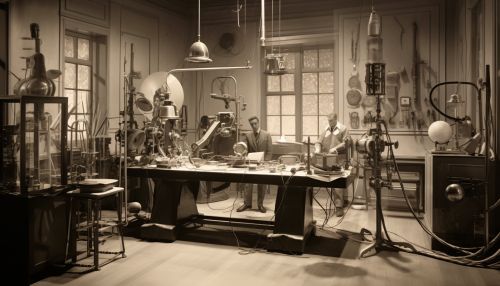Medical Physics
Overview
Medical physics is a branch of physics that applies the concepts and principles of physics to the diagnosis and treatment of human diseases. It is a multidisciplinary field that bridges the gap between the physical sciences and medicine. The field is primarily concerned with the use of radiation in medicine, particularly in the areas of medical imaging, radiation therapy, and radiation protection.
History
The field of medical physics has its roots in the discovery of X-rays by Röntgen in 1895. This groundbreaking discovery paved the way for the development of diagnostic radiology, which is now a cornerstone of modern medicine. The subsequent discovery of radioactivity by Becquerel in 1896 and the development of radium therapy by Curie further expanded the scope of medical physics.


Branches of Medical Physics
Medical physics can be broadly divided into three main branches: diagnostic radiology physics, nuclear medicine physics, and radiation oncology physics.
Diagnostic Radiology Physics
Diagnostic radiology physics involves the application of physics principles to the generation and interpretation of medical images. This includes modalities such as X-rays, computed tomography (CT), magnetic resonance imaging (MRI), and ultrasound.
Nuclear Medicine Physics
Nuclear medicine physics focuses on the use of radioactive substances for diagnosis and therapy. This includes procedures such as positron emission tomography (PET) and single photon emission computed tomography (SPECT).
Radiation Oncology Physics
Radiation oncology physics is concerned with the use of radiation to treat cancer. This involves the planning and delivery of radiation treatments, as well as the assessment of their effectiveness and safety.
Medical Physics in Practice
In practice, medical physicists work in a variety of healthcare settings, including hospitals, clinics, and research institutions. They collaborate closely with other healthcare professionals, such as radiologists, oncologists, and technologists, to ensure the safe and effective use of radiation in medicine.


Education and Training
Becoming a medical physicist typically requires a strong background in physics, followed by specialized training in medical physics. This training can take the form of a master's or doctoral degree program, or a residency program in medical physics.
Future Directions
The field of medical physics is continually evolving, driven by advances in technology and our understanding of the human body. Future directions in the field may include the development of new imaging modalities, improved radiation therapies, and the application of artificial intelligence in medical physics.
